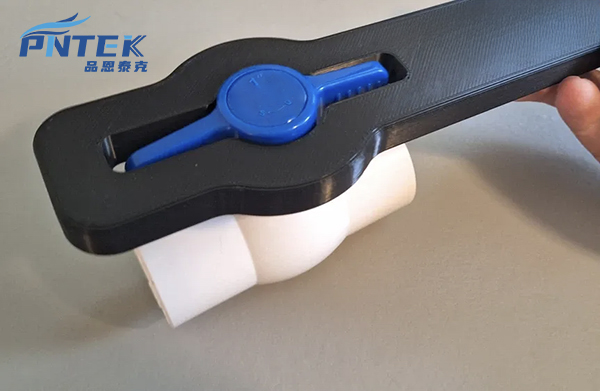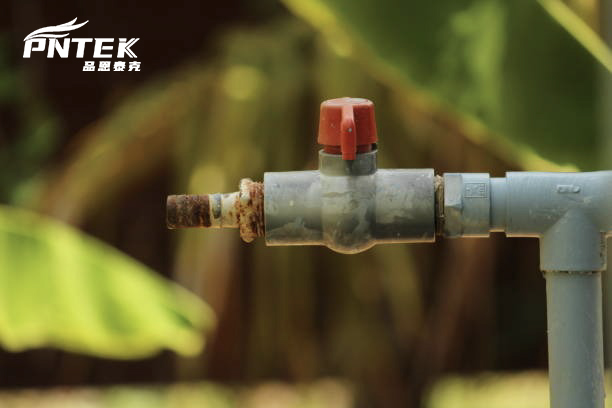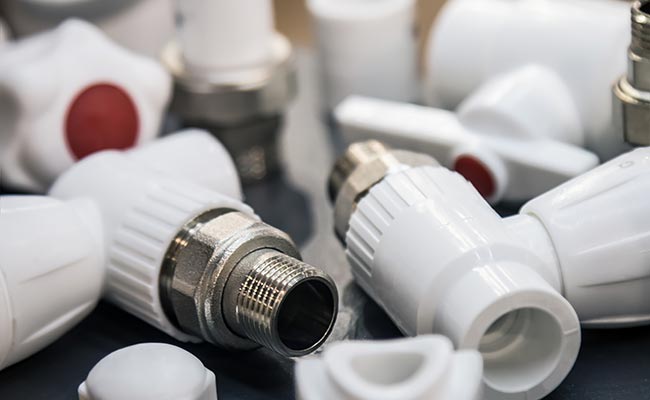The valve is stuck fast, and your gut tells you to grab a bigger wrench. But more force can easily snap the handle, turning a simple task into a major plumbing repair.
Use a tool like channel-lock pliers or a strap wrench to gain leverage, gripping the handle close to its base. For a new valve, this will break in the seals. For an old valve, it overcomes stiffness from non-use.

This is one of the first things I demonstrate when training new partners like Budi and his team in Indonesia. Their customers, who are professional contractors, need to have confidence in the products they install. When they encounter a stiff new valve, I want them to see it as a sign of a quality seal, not a defect. By showing them the correct way to apply leverage without causing damage, we replace their uncertainty with confidence. This practical skill is a small but vital part of a strong, win-win partnership.
Can you lubricate a PVC ball valve?
You have a stiff valve and your instinct is to grab a common spray lubricant. You hesitate, wondering if the chemical could harm the plastic or contaminate the water flowing through it.
Yes, you can, but you must only use 100% silicone-based lubricant. Never use petroleum-based products like WD-40, as they will chemically attack the PVC plastic, making it brittle and causing it to crack under pressure.

This is the most important safety rule I teach, and I make sure everyone from Budi’s purchasing team to his sales staff understands it. The danger of using the wrong lubricant is real and severe. Petroleum-based lubricants, including common household oils and sprays, contain chemicals called petroleum distillates. These chemicals act as solvents on PVC plastic. They break down the material’s molecular structure, causing it to become weak and brittle. A valve might turn easier for a day, but it could fail catastrophically and burst a week later. The only safe option is 100% silicone grease. Silicone is chemically inert, so it will not react with the PVC body, the EPDM O-rings, or the PTFE seats inside the valve. For any system carrying drinking water, it’s also critical to use a silicone grease that is NSF-61 certified, meaning it is safe for human consumption. This isn’t just a recommendation; it is essential for safety and reliability.
Why is my PVC ball valve hard to turn?
You just bought a brand new valve and the handle is surprisingly stiff. You start to worry that it is a low-quality product that will fail right when you need it most.
A new PVC ball valve is stiff because its tight, perfectly-machined internal seals create an excellent, leak-proof connection. This initial resistance is a positive sign of a high-quality valve, not a defect.

I love explaining this to our partners because it completely changes their perspective. The stiffness is a feature, not a flaw. At Pntek, our primary goal is to create valves that provide a 100% effective shutoff for years. To achieve this, we use extremely tight manufacturing tolerances. Inside the valve, a smooth PVC ball presses against two fresh PTFE (Teflon) seats. When the valve is new, these surfaces are perfectly dry and clean. The initial turn requires more force to overcome the static friction between these perfectly mated parts. It’s like opening a new jar of jam—the first twist is always the hardest because it’s breaking a perfect seal. A valve that feels loose out of the box might actually have lower tolerances, which could eventually lead to a weeping leak. So, a stiff handle means you are holding a well-made, reliable valve. If an old valve gets stiff, it’s a different problem, usually caused by mineral buildup inside.
How to make a ball valve turn easier?
The handle on your valve will not budge with your hand. The temptation to apply massive force with a big tool is strong, but you know that is a recipe for a broken handle or a cracked valve.
The solution is to use smart leverage, not brute force. Use a tool like a strap wrench or pliers on the handle, but make sure to apply force as close to the valve’s center stem as possible.

This is a lesson in simple physics that can save a lot of trouble. Applying force at the end of the handle creates a lot of stress on the plastic and is the most common cause of snapped handles. The goal is to turn the internal stem, not bend the handle.
The Right Tools and Technique
- Strap Wrench: This is the best tool for the job. The rubber strap grips the handle firmly without scratching or crushing the plastic. It provides excellent, even leverage.
- Channel-Lock Pliers: These are very common and work well. The key is to grip the thick part of the handle right where it connects to the valve body. Be careful not to squeeze so hard that you crack the plastic.
- Steady Pressure: Never use hammering blows or quick, jerky movements. Apply slow, steady, and firm pressure. This gives the internal parts time to move and break free.
A great tip for contractors is to work a new valve’s handle back and forth a few times before gluing it into the pipeline. It is much easier to break in the seals when you can hold the valve securely in your hands.
How to loosen a stiff ball valve?
You have an old valve that is completely seized. It has not been turned in years, and now it feels like it is cemented in place. You are thinking you will need to cut the pipe.
For a deeply stuck old valve, first shut off the water and release the pressure. Then, try applying gentle heat from a hairdryer to the valve body to help expand the parts and break the bond.

When leverage alone is not enough, this is the next step before attempting disassembly or giving up and replacing it. Old valves usually get stuck for one of two reasons: mineral scale from hard water has built up inside, or the internal seals have adhered to the ball over a long period of inactivity. Applying gentle heat can sometimes help. The PVC body will expand slightly more than the internal parts, which can be just enough to break the crust of mineral scale or the bond between the seals and the ball. It is crucial to use a hairdryer, not a heat gun or a torch. Excessive heat will warp or melt the PVC. Gently warm the outside of the valve body for a minute or two, then immediately try turning the handle again using the proper leverage technique with a tool. If it moves, work it back and forth several times to clear the mechanism. If it is still stuck, replacement is your only reliable option.
Conclusion
To make a valve turn easier, use smart leverage at the handle’s base. Never use petroleum lubricants—only 100% silicone is safe. For old, stuck valves, gentle heat may help.
Post time: Aug-08-2025




